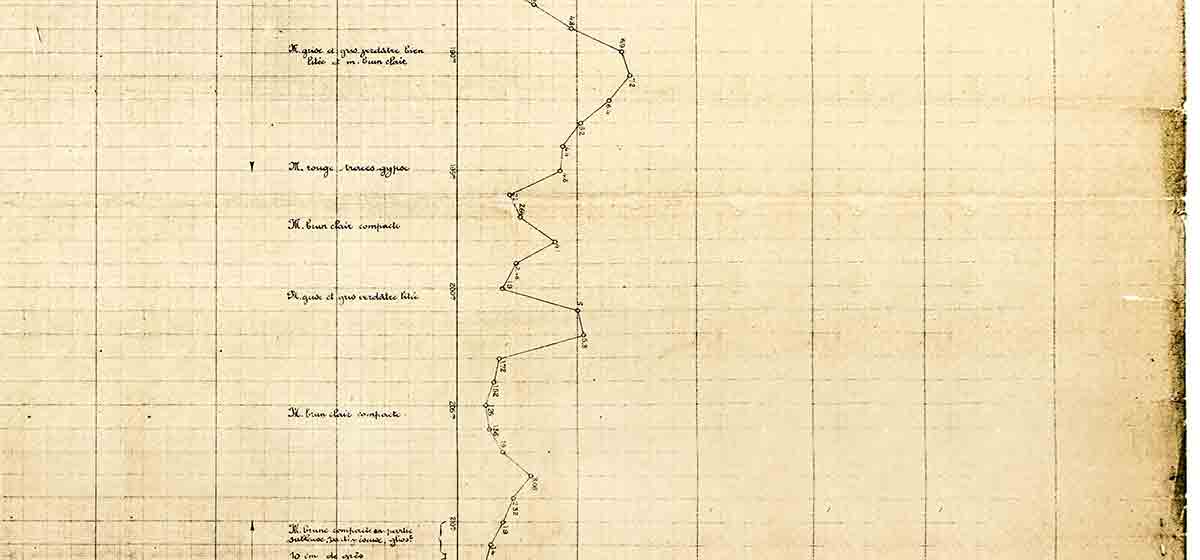1920s
Pioneering the first of many firsts

It took until 1920 for Conrad Schlumberger to publish the results of the experimental surface resistivity measurements he had carried out since 1911. In the same year, Conrad and Marcel opened their first office at 30 rue Fabert in Paris. Conrad’s focus on geophysical measurement was all-consuming now, prompting him to resign his professorship at École des Mines, Paris in 1923. Conrad and Marcel spent the next three years conducting geophysical surveys in Serbia, South Africa, Congo, and the US as well as Romania, where they made the first mapping of an oil-productive salt dome using electrical prospecting.
In 1926, they created the Société de Prospection Électrique, or “Pros” as it was nicknamed, the forerunner of the Schlumberger company and SLB. Initially, the firm carried out surface prospecting for the metal ore mining industry but gradually extended its activities to embrace exploration of possible oil-bearing structures.
To better understand measurements made at the surface, the Schlumberger brothers needed to incorporate resistivity information from deeper formations. Conrad had the idea of measuring resistivity directly with an electrical probe—or sonde—run into boreholes drilled through the formations.
The first attempt to do this was made on September 5, 1927, by a team led by experimental physicist Henri Doll, Conrad’s son-in-law. Measurements were taken from an electrical sonde at various discrete depths in a 500-meter-deep well in Pechelbronn in the Alsace region of France. A new term was coined to describe the results of this multidepth survey: It was called an electrical resistivity well log.
This first log was little more than a simple hand-plotted graph, but it marked a turning point in the history of oil exploration. Before then, engineers and scientists had to rely on core samples or cuttings brought up from boreholes to assess the composition of subsurface rocks. But the indications these gave were highly unreliable and frequently missed oil zones. The log showed that electrical measurements taken in boreholes could help identify the geological formations around them. It effectively enabled people to “see” what was down the well—and because the resistivity recordings proved to be repeatable in neighboring wells, it was possible to enable precise correlation of formations across an entire field.
International demand for the process, also known as “electrical coring,” grew rapidly. By 1929, subsurface logs were being run in the Soviet Union, Venezuela, and the US. More patents were filed around the world, ensuring that the intellectual property of Schlumberger products was secured early.
| Year | Event |
|---|---|
| Year 1920 | Event The Schlumberger brothers open their first office at 30 rue Fabert in Paris |
| Year 1923 | Event The Schlumberger brothers begin conducting geophysical surveys in Romania, Serbia, Union of South Africa, Belgian Congo, and the US Mapping of the first oil-productive salt dome by electric prospecting in Romania |
| Year 1925 | Event Henri-Georges Doll joins the company, initially part-time |
| Year 1926 | Event Formation of Société de Prospection Électrique (Pros), the precursor of the company Schlumberger and SLB |
| Year 1927 | Event Doll and his team record the first electrical resistivity well log in Pechelbronn, France The Schlumberger brothers begin surface electrical prospecting in Canada |
| Year 1929 | Event Subsurface surveying is carried out in Venezuela (March 5), the US (August 17) and the Soviet Union (December 24) |
